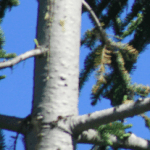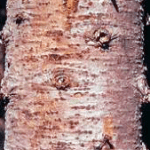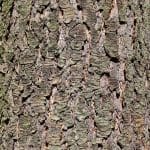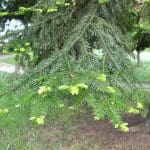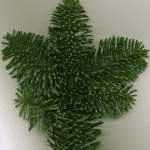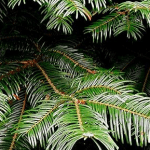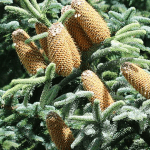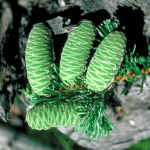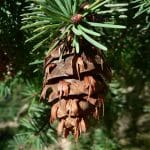Through this piece we’re going to take a look at The Differences Between Yew and Firs. Why? because Yew is a poisonous species of tree native to the British Isles. Firs are a fragrant group of trees with edible properties, that have been introduced to Britain, from around the world, but the most common species planted for commercial logging and on estates and in parks are from North America.
Yew, Taxus Baccata
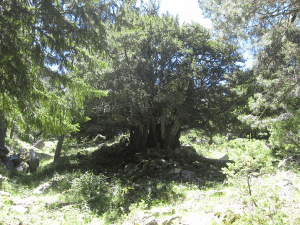
One of only 3 conifers native to the British Isles, Yew is highly toxic yet was held in very high esteem by our ancestors. This tree helped to form the huge primeval forests that dominated Earth, long before the arrival of broadleaved trees.
Bark and Trunk
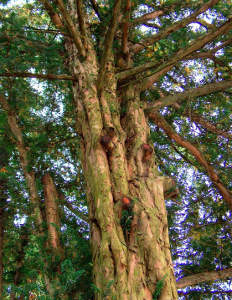
Yew often have many trunks which can form a single deeply ridged central trunk, that sometimes have gaps. These many trunks form due to the trees ability to form new trunks when the branches touch the ground. The bark is reddish and peeling, revealing reddish brown patches beneath.
Needles
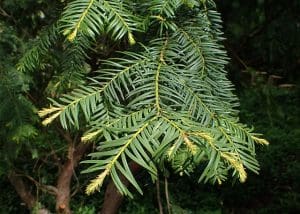
The needles look very similar to both Fir, being up to 4cm long and about 3mm wide, flattened and narrowing to a sharp point. They’re dark green on the top and paler underneath with two yellowish bands, arranged in two opposite rows, in spirals along the twigs. They can remain on the tree for up to eight years before falling. The needles have no fragrance when crushed.
Fruit and Seeds
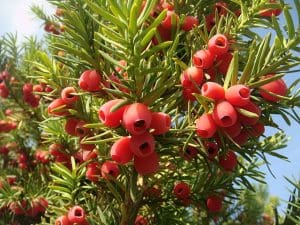
Yew is one of the first trees to flower in spring. The male and female flowers are on separate trees and form in the angles between the narrow leaves and the stem. The flowers can remain dormant for several years, especially if there is not enough light.
The male flowers look like miniature globes with yellow stamens set in brown scales. The pollen is held in little sacs beneath them. When the male flowers begin to mature in February or March, the stamen shields open, and the pollen is then released to be carried away by the wind. When the weather is good the stamen shields remain open, but they close during bad weather to keep the pollen dry. Because the tree relies on the wind to carry it’s pollen to a female tree, it produces vast quantities of pollen, that when released, cover large areas with a golden yellow dust.
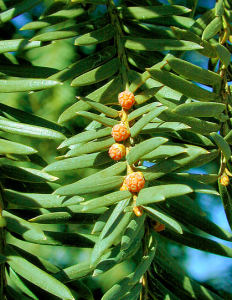
The female flowers are the size of a pin head, with a tip that projects from tiny green protective scales. A mucilaginous substance is released from this tip to catch any floating pollen from the male trees.
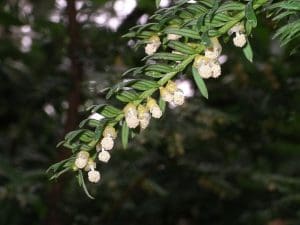
Once the female flowers have caught the pollen, the tips move back into their ovules and fertilization occurs. The fruit that develops is small and green and sits on a cup. By October the cup has grown around the fruit completely, covering it with a fleshy red mucilage.
No other Conifer has berries, (arils) like this.
Firs
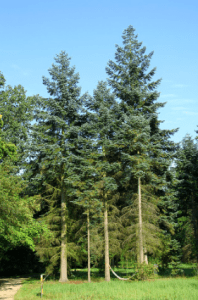
There are about 50 different species of Fir with Douglas Fir, rather confusingly, not actually being a true Fir. It does, however, share enough similarities to be referred to as a Fir by the scientific community. True Firs are members of the genus Abies. Douglas Fir is in a genus of it’s own, Pseudotsuga menzies, which translates as false Hemlock in Latin, and refers to some similarities between it and the Hemlock Spruces, Tsuga spp. Grand Fir, Noble Fir and Douglas Fir have ben widely planted, particularly in Scotland where they are well suited to the climate. Here are links to the full identification guides for these species.
https://totallywilduk.co.uk/2022/03/04/douglas-fir-pseudotsuga-menziesii-identification-guide/
https://totallywilduk.co.uk/2023/01/05/noble-fir/
https://totallywilduk.co.uk/2023/01/05/grand-fir-abies-grandis
Bark and Trunk
Generally, Fir trees grow incredibly tall with a symmetrical, conical shape on a strong single trunk. Some of them have blisters on their bark when young, varying in colour from various shades of white, grey, browns and even black in some species. The bark tends to be smoother in young trees becoming more fissured with age.
Needles
Flat needles which are attached to the shoot by sucker like structures at the base. The needles are usually much softer and pliable with flatter, rather than pointed tips. If you grabbed a branch of a Fir the needles wouldn’t feel sharp against your skin. Douglas Fir needles are not attached to the shoot by a sucker like structure.
The needles of Firs, including Douglas Fir, are sweet and aromatic with candied orange peel and grapefruit overtones, delicious with chocolate!
Fruit and Seeds
Both the male and female flowers are on the same tree. The male flowers are often red or pink, and grow on the underside of the branches and shoots. The female flowers are often greener in colour and are upright, in separate clusters on top of the shoots and branches and develop in to large upright cones containing the seeds.
Douglas Fir differs from true Firs, in that the cones are pendulous, (they hang downwards).
In Summary
Firs have fragrant needles. Yew needles have no fragrance.
Firs have woody cones. Yew have fleshy red cones that look like a berry.
Firs have a single tall strong trunk. Yews are shorter and the trunk is made by bundles of trunks, unless very young saplings.
The bark of Firs is smooth when young, often with resinous blisters, developing some fissures with age, but generally looking quite smooth. Yew has reddish bark which is much softer than that of Firs and peels off the trunk with ease.
Grand Fir has the closest resemblance to Yew needles. Grand Fir smells very obviously of Grapefruit and Mandarin when the needles or branches are crushed or bruised. Yew has no fragrance.
References
Sterry, Paul, Collins Complete Guide To British Trees, HarperCollins Publishers Ltd
Paterson, Jacqueline Memory, Tree Wisdom The Definitive Guidebook to the Myth, Folklore and Healing Power of Trees, HarperCollins Publishers Ltd
Forest, Danu, Celtic Tree Magic, Ogham Lore and Druid Mysteries, Llewellyn Publications



